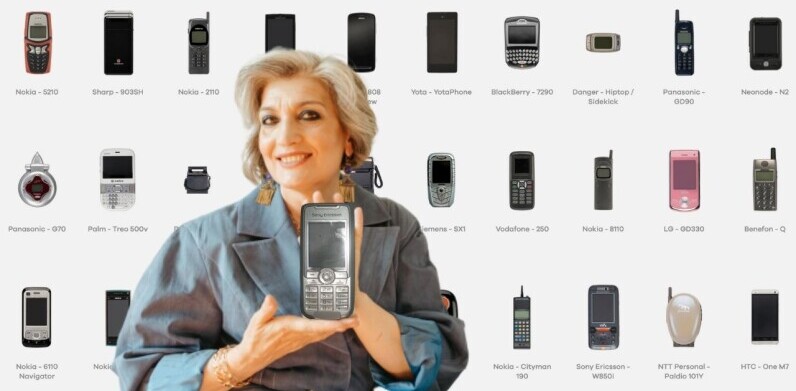
We’ve all had the “smartphone conversation.” The one about our unhealthy obsession and inability to put phones down. This fear is legitimized by research, showing that we spend approximately one third of our waking hours on our mobile devices – just over five hours per day. However, while we all might be concerned about this phenomenon, there is one group that could not be happier: cybercriminals.
Society’s smartphone addiction is a gold mine for cybercriminals, as consumers are significantly less security savvy on their smartphones than on traditional computers. So, although experts often cite the concerning mental and physical health implications of this trend, there is another important reason to detach from our smartphones: helping to reduce crime.
While we are generally aware of the potential cyber risks associated with personal computers, and install antivirus software and avoid suspicious links, we do not exercise the same caution when it comes to smartphones. This is particularly problematic when we consider just how much information the average phone contains and how it is used to do the same activities that we use our computers for.
In fact, mobile devices are arguably the #1 source of centralized, comprehensive personal information – from the people we talk to, our family photos, our bank accounts, our favorite shopping sites, and our location at all times.
In recent years, the smartphone has evolved from just calling, to texting, to also emailing – and now it can do everything a PC can and more. Most importantly, when it comes to security, our phones now store our most critical passwords as well as our financial details, from mobile banking to credit card information and money transfer applications such as Venmo.
And yet, we still view the smartphone as a simple device, despite the advanced technology it harnesses and the wide range of activities we use it for on a daily basis. Thanks to this lag in understanding of how much our mobile devices contain, the smartphone has become an easy entry point with high rewards for cybercriminals.
To capitalize on this, hackers are constantly inventing more sophisticated methods of hitting the smartphone such as SMS phishing, and recognizing when we are operating on mobile devices to serve up false sites to collect user information.
Recently, criminals have even developed ways to target app creators, not just end-users, as the returns are even more lucrative when infected code goes undetected, and is ultimately passed onto a wide range of potential victims.
These dangers vary across generations. Silver surfers (50+) are most careful and demonstrate the highest concern for their personal security. Among other findings, a study from 2017 reveals that 86 percent of silver surfers do not download free applications or software to their work devices without consulting the IT department.
However, many do not understand the technology. The need to teach this generation even the simplest tasks on a smartphone on a regular basis illustrates that many silver surfers struggle to comprehend the full capabilities of their devices. This poses more issues than expected, since silver surfers actually prove to be more active online than we think.
Gen X experienced more exposure to this technology than silver surfers ever did, which breeds a better understanding of the consequences. However, they fail to appropriately act on their knowledge and concerns.
Millennials have arguably the most experience with advanced technology, but they are the least cautious. This population can be negligent, exhibiting dangerous generation-specific trends, such as the tendency to add everyone on social media and not filter who can access their information.
Gen Z, the latest generation to adopt smart technology, exercises the conceit of millennials and even takes it to new heights, as 41 percent believe they are not even targets for hackers. Gen Z’s classrooms are now becoming increasingly tech-heavy, opening yet another channel of access for cybercriminals to exploit the newest generation of smart tech users.
This combination of consumer neglect, generational misunderstanding and hackers’ dedication to exploitation makes the smartphone an ideal environment for cybercrime. And this has serious consequences, not just for us as individuals, but also the world around us.
The effects of cybercrime
When we think of cybercrime, we think of instances with personal implications such as data breaches or identity thefts that occur once, and can hopefully be resolved quickly. But cybercrime is not necessarily ephemeral. Much cybercriminal activity has long-lasting effects and can even fuel physical crimes.
Cybercriminals tend to reinvest in further criminal behavior – both online and offline – with the money raised through previous successful hacks. To provide an extreme example, one cybercrime incident generated more than $3.5 million to fund terrorist activities, as revealed by a report announced at RSA in 2018. And the scary reality is that if this can happen via stolen credit card numbers, then a mobile phone is just as, if not more, likely to become a conduit for cybercriminals to reinvest in physical crime.
Additional funds resulting from cybercrime have fueled other activities which massively damage people and society, including drug and human trafficking. And even though this particular attack was not routed through a cell phone per se, the truth remains: where there is a vulnerable entry point, there is a risk of cybercrime.
At McAfee, my colleagues and I are already seeing and stopping three new pieces of malware every second of every day, with mobile malware enjoying the highest growth rate at 42 percent year-over-year. In fact, it took PC malware twenty-two years to get to two million samples. It took mobile half that amount of time.
Therefore, the potential implications of careless smartphone usage are far more severe and wide-reaching than most of us realize. This unsettling fact stands at odds with the Millennial and Gen Z desire to do good and support social good, considering their own lack of caution while funding criminal activity.
Putting down our cell phones – and when we do pick them up, making sure they’re properly protected – will not just be good for our mental health. It is also crucial for stopping these hackers in their tracks.
Get the TNW newsletter
Get the most important tech news in your inbox each week.





